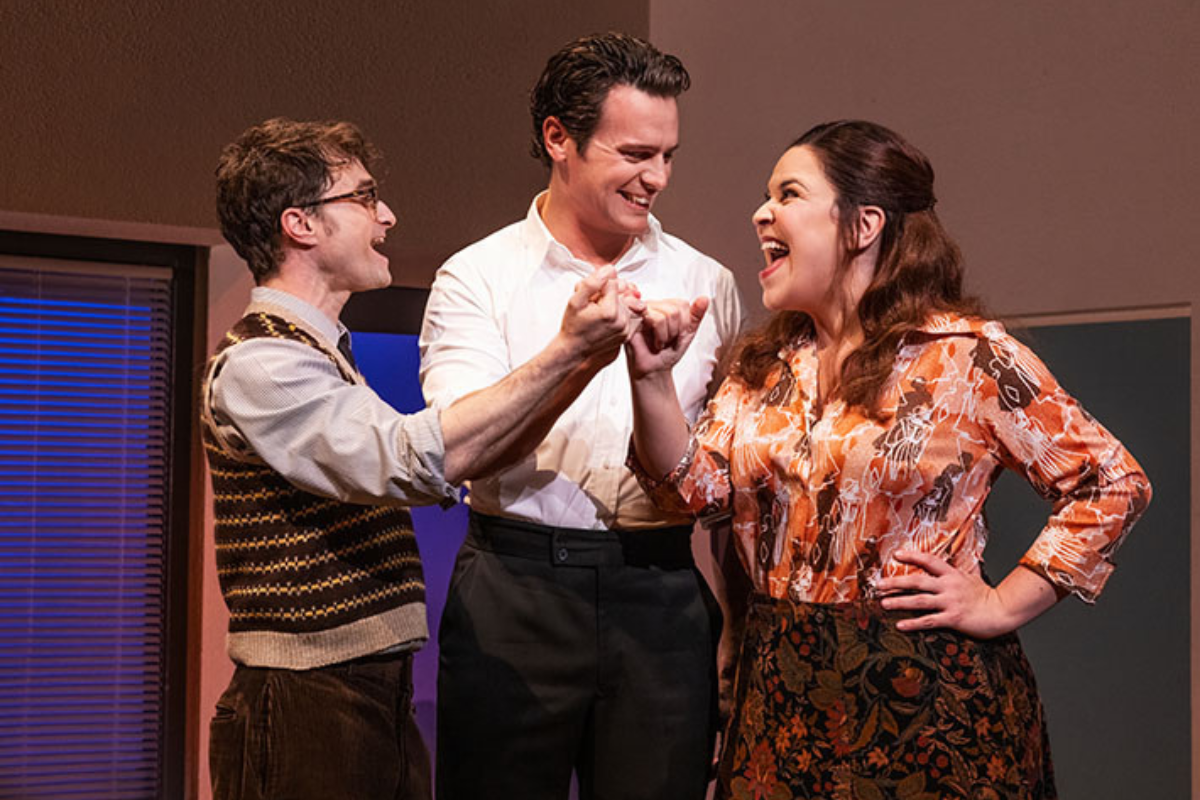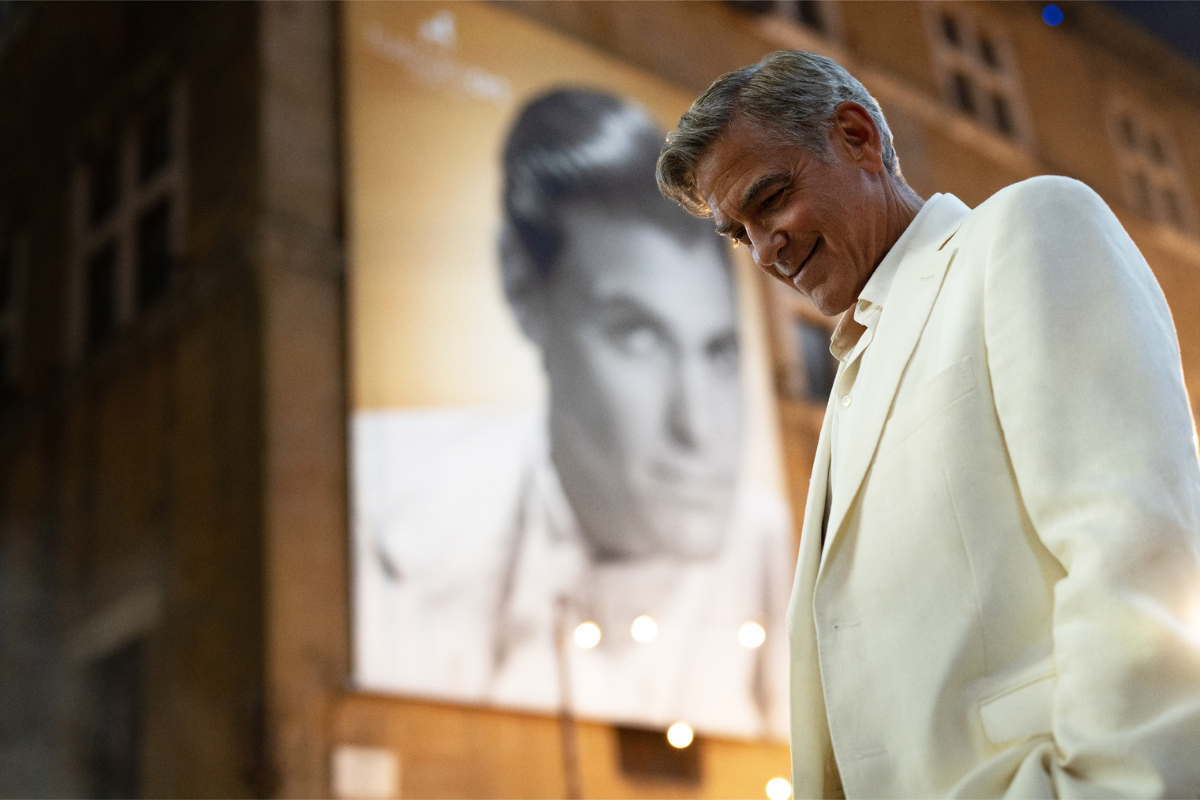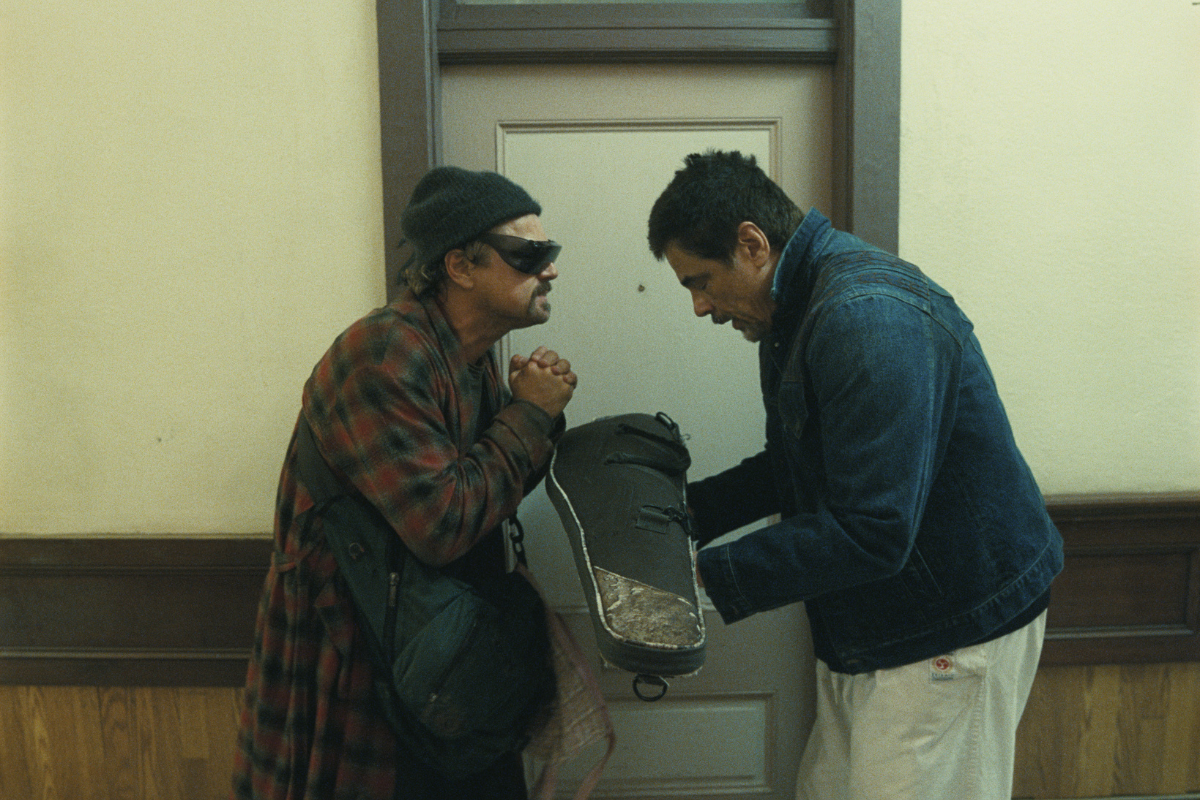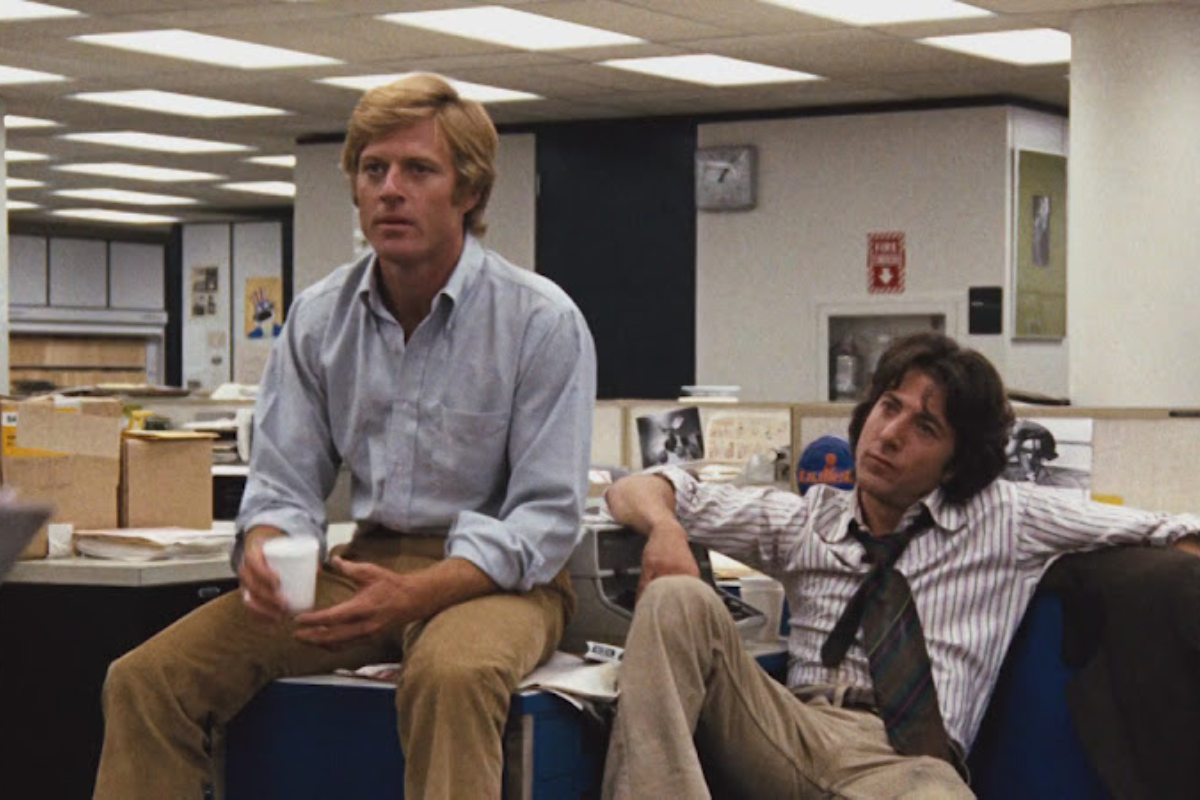UNDERSTANDING SCREENWRITING: All Over the Place
From the messiness of ‘Ghostbusters: Frozen Empire’ to the obscene letters of ‘Wicked Little Letters’ to the romp’em-stomp’em ‘The Ministry of Ungentlemanly Warfare’ to some books that are not as good as they should have been.
Flaws in Sequels...Many…Many Sequels
Ghostbusters: Frozen Empire (2024. Written by Gil Kenan & Jason Reitman, based on the 1984 film Ghostbusters, written by Ivan Reitman and Dan Aykroyd & Harold Ramis. 115 minutes)
This is the fifth Ghostbusters film by my count. Six, if you count the 2021 Estonian art house film Godzilla, King Kong, Ghostbusters, and The Marvels, which I don’t. The first Ghostbusters (1984) was funny. Ghostbusters II (1989) followed the original so closely that it simply did not have the freshness of the first one.
The third film in 2016 was called simply Ghostbusters. The fact that the cast was all female offended what appeared to be all the misogynist trolls in the known universe. The writing was again, as in Ghostbusters II, not as fresh as it could have been, and with the exception of Kate McKinnon, the actors were not given enough to work with. You can read my review of it here.
The fourth film, the 2021 Ghostbusters: Afterlife, both got away from the New York setting and paid tribute to the late Harold Ramis, who played Spengler in the first two films. We are introduced to his daughter Callie, and her two teenage kids, Phoebe and Trevor, and Callie’s boyfriend Gary. They discover late Grandpa Spengler’s equipment and we are back in action.
Many people liked Afterlife. I never saw it. And that was a big problem for me at the beginning of Empire. The opening scenes are all about Callie, Gary, and the kids. The writers are assuming we have seen Afterlife and not only know but are invested in these characters. Well, some of us are not.
This is always a problem with sequels: how much of the previous films do you have to explain to both your new audience, who may know very little about the storylines, or your returning audience, who may get bored with all the backstory. I often have this problem, going back to the Star Trek movies. I had not seen several of them, but then caught one where I was bored silly for the first half hour while the film finished off a bunch of storylines from the previous one.
I gather from some of the readers’ comments on IMDb that they loved Carrie Coon and especially Paul Rudd in Afterlife as Callie and Gary, respectively. I am not surprised; both of them are terrific actors. Here in Empire neither one of them is given much to do. Coon is given only one, or maybe two, good lines. Rudd is not even given that.
More of the focus in this film is on Phoebe, the science whiz teen, played by Mckenna Grace. Part of that is the script, and part of it is that you cannot take your eyes off Grace when she is on the screen. So it may be that she has so much screen time in the final film because the editor could not bear to cut her stuff.
A similar thing happened in the first Ghostbusters film. If you ever see the first trailer for the first film, you will notice that Bill Murray does not dominate it as he does the film. My guess is that the editor of the trailer had no idea how many of Murray’s adlibs were going to make it into the final cut. That happens more than you might think.
Anyway, Grace’s Phoebe is given a very interesting storyline in which she meets a young woman ghost named Melody. Melody is a rather moody ghost, and she is beautifully played by Emily Alyn Lind. Lind is almost as compelling onscreen as Grace is, and their scenes are some of the best in the film. Unfortunately, those scenes are not in the same key as the rest of the film.
Another good performance is by Kumail Nanjiani as Nadeem, who sells artifacts, one of which has the monster that is going to freeze everybody. You may remember Nanjiani playing himself, sort of, in the wonderful 2017 movie The Big Sick. This part is as far away from that one as you can get. This part is well written (and I would guess that the script included a description of his apartment, which almost steals the picture) and Nanjiani gets as much out of it as you can.
One complaint that some reviewers have had is that there are too many characters, which also happens in sequels. They are right. From the original film, Dan Aykroyd is back as Stantz and he is given the most to do. Ernie Hudson is back and is, I think, given more lines to say than he has had in any of the previous films. Annie Potts is present and accounted for, and has finally been promoted from secretary to a full-fledged ghostbuster, but she too is only given a couple of good lines. Bill Murray is back, but the adlibs they use in this film do not work as well as those in the first one. On the other hand, he and Nanjiani have a great interview scene. It can go on both their demo reels.
By now I don’t really have to tell you the film is a mess, do I? The plot keeps getting interrupted by all these scenes with all these characters. That is a script problem. Jason Reitman is the son of Ivan Reitman. Ivan directed the first two films and produced all of them. He gets a producer credit on this film, although he died two years ago. I am sure the Reitmans protected what they could of the franchise.
The other writer is Gil Kenan, who also directed this film. He was one of the writers on Afterlife and has directed several other films. I suspect the unevenness comes from him. What is true about the script is true about his direction. Sometimes he gets the scenes right and sometimes he does not.
I have always been a fan of letting writers direct their own scripts, but it does not always work out. Not everybody can be Billy Wilder.
Now This is More Like It.
Wicked Little Letters (2023. Written by Jonny Sweet. 100 minutes)
How do you start a movie?
Sweet has done it right. The film is based on a true incident that happened in the small village of Littlehampton, England, in the early 1920s. Somebody was sending awful, obscene letters to people in the village, particularly to the middle-aged spinster lady Edith Swan.
So how do you start the film? With the first letter? Nope. Sweet starts with the 19th letter. We are plunged right into the action.
Edith’s father calls the police and Edith is fairly certain the letter writer is her neighbor, the earthy, foul-mouthed Irish woman Rose Gooding. The police arrest Rose.
The one police officer who has suspicions it may not be Rose is Gladys. She is not only a woman, but of Indian descent. The male cops are always looking down on her.
Edith is played by Olivia Colman. Rose is played by Jessie Buckley. These are two of the most powerhouse actors around. And the first half of the movie is stolen by Anjana Vasan as Gladys. Stealing a movie from those two is not petty larceny, it’s grand theft movie.
So how does Vasan do it? In the first half of the movie, Edith and Rose are screaming at each other a lot. Gladys is very quiet. We expect the histrionics from Colman and Buckley, but Vasan’s quiet approach is a great counterpoint to them.
And then the pattern shifts. Rose goes to trial and Colman and Buckley tone it down as their characters realize how serious matters are. And then Vasan gets some slapstick bits as a different kind of counterpoint.
No, I am not going to tell you who wrote the letters, but Sweet lets us know midway through the film and then manages to develop that beautifully.
Oh, did you notice that there is only one writer on this film? Sometimes one is better than many. Sweet is also an actress who has previously written for television. This is her first feature script.
Ah, one other point. I have mentioned before the classic British Ealing comedies of the late 40s and early 50s. As a writer at the time in Newsweek described the Ealing comedies, they are about “villages full of dartboards and loveable characters.” That is true of this film, but we are seventy years on and this film is filled by the dirtiest, raunchy, obscene, etc. language you have ever heard in a movie or anywhere else.
When I was teaching screenwriting, I would often have students submit scripts with foul language. When I called them on it, they would inevitably say, “But that’s how people talk.” Yes, but excessive foul language can get very tiresome in life, especially in the movies.
But here it works. We hear a lot of the details in the letters, and because they are about characters we know, or think we know, we are interested and amused. But be forewarned if you intend to see this hugely entertaining movie.
The Guns of Navarone as Directed by Guy Ritchie.
The Ministry of Ungentlemanly Warfare (2024. Screenplay at Paul Tamasy & Eric Johnson & Arash Amel and Guy Ritchie, based on the non-fiction book The Ministry of Ungentlemanly Warfare: The Mavericks Who Plotted Hitler’s Downfall, Giving Birth to Modern-Day Black Ops by Damien Lewis. 120 minutes)
A special team of British commandos go on a mission to destroy a Nazi operation. After much effort (climbing up a mountain by rope, etc), and many twists and turns, they accomplish their mission.
Well, it sounds like The Guns of Navarone, the classic 1961 World War II film that was legitimately advertised as “the greatest high adventure ever filmed.”
I watch it once a year, of course.
So I was interested to see what director and co-screenplay writer Guy Ritchie does with similar material. A lot, actually, and…nearly all of it good. I doubt I will be watching this every year, but maybe every couple of years.
Ritchie is known for his free-wheeling over-the-top movies. There is plenty of that here, especially in the last half of the film, which has a body count about five or six times that of Navarone.
He also tells his story much quicker, finishing it up 37 minutes shorter than the earlier film. In Carl Foreman’s script for Navarone, we get lots of scenes for the all-star cast (Gregory Peck, David Niven, Anthony Quinn et al). The group of commandos here do not have that kind of star power, and the writing does not get into their characters as much as Foreman did.
Gus, the lead commando, is played by Henry Cavill, whom I dragged over the coals in my review of Ritchie’s The Man From U.N.C.L.E. (2015), which you can read here. I have not seen much of him since, but people keep casting him in lead roles. Here he is terrific, loose, and funny and unlike in U.N.C.L.E. he has learned how to read lines. Maybe having the unruly hair, beard, and mustache helps.
Two unofficial members of the team come off better in the script and the film. Early on we are introduced to Marjorie Stewart, played by Ezia González. If you have seen the trailer, you have seen her fire two guns, that blow the smoke away. That trivializes her. Her first scene on a train establishes she is one of the smartest persons in the room.
I say “one of” because she is with Heron, the owner of the nightclub on the island our guys are heading for. Unlike the rest of the team, Heron is not based on a single real person. He’s a composite of several men who were involved. So what makes him such an interesting character on screen is that he keeps showing up in places you would not expect to do things you would also not expect. He is definitely the smartest person in the room.
As much as I love Navarone, I also love the speed at which this film movies. There is one shot underwater of the paddles on the boat they are going on shore that struck me as extraneous, but that was the only one. Maybe you can find another one. The pacing, in the script and the directing (and the editing), is perfect for this film: just fast enough to keep you hooked, but never too fast to lose you.
Ungentlemanly also has the funniest line I have heard so far this year in a movie. The line is “How happy?” which by itself is a nothing line. When you see it in the film and realize what it means and watch what happens next, you will appreciate it. Instead of trying to knock yourself out writing joke lines, work out the situation and setup that is crucial to make simple lines work.
Books That Don’t Quite Do the Job.
I often review books about screenwriting in this column, usually good books. But there are a lot of books about film that are good in many ways but do not bother to deal with screenwriting as well as they should.
Dwayne Epstein wrote a best-selling biography of Lee Marvin and follows it up with Killin’ Generals: The Making of The Dirty Dozen, The Most Iconic WW II Movie of All Time (2023), (and yes, I suspect that subtitle was written by somebody in the marketing department). The book is about the making of the film and the sections on the production are lively and entertaining.
Epstein is, however, very sloppy about the writing of the script. The first drafts were written by Nunnally Johnson. Then director Robert Aldrich came on the project, did not like the script, and brought in one of his favorite writers, Lukas Heller, to rewrite it. Aldrich later said in a notorious interview that he thought Nunnally’s script would have made a good 1947 war movie, but that they wanted to make a good 1967 war movie. That has been quoted by a lot of people who should have known better.
The truth is that Nunnally’s script would have made more of a 1967 war movie; it was tougher (yes) and less sentimental (also yes) than Heller’s. Having read Nunnally’s draft, I made that point in my 1980 biography of Nunnally (Screenwriter: The Life and Times of Nunnally Johnson), which Epstein apparently never read. Nor did he dig out and read Nunnally’s draft.
Hermione Lee is a noted British literary scholar who has written books on Philip Roth and Willa Cather. In 2020 she published her 834-page biography of British playwright and screenwriter Tom Stoppard. It is exhaustively researched, except for Stoppard’s work as a screenwriter. When she gets to his brilliant adaptation of John Le Carré’s novel The Russia House (1990), she just writes about how Stoppard and Le Carré became friends.
Worse is her failure to deal with Shakespeare in Love (1998). American screenwriter Marc Norman wrote the early drafts, and then Stoppard came in to do the final drafts. Because of Stoppard’s reputation, most people assume he did all the good stuff. Maybe, but Lee has not looked at the scripts by both men.
Foster Hirsch’s new book, Hollywood and the Movies of the Fifties: The Collapse of the Studio System, the Thrill of Cinerama, and the Invasion of the Ultimate Body Snatcher - Television (2023) is also not short (639 pages). He is covering a lot, especially on female stars and their aging problems, but very little on screenwriters and screenwriting.
The one screenwriter he quotes a lot is Philip Dunne in his memoir Take Two: A Life in Movies and Politics. He quotes him less on screenwriting and more on how Darryl F. Zanuck ran 20th Century-Fox and how life was in the era of the Blacklist.
There are now a bunch of film historians dealing with screenwriting, but we really need to push those others writing about movies to include screenwriting as well, a normal part of the process.
Tom Stempel is a Professor Emeritus at Los Angeles City College, where he taught film history and screenwriting from 1971 to 2011. He has written six books on film, five of them about screen and television writing. You can learn more about his books here. His 2008 book Understanding Screenwriting: Learning from Good, Not-Quite-So- Good, and Bad Screenplays evolved into this column. The column first appeared in 2008 at the blog The House Next Door, then at Slant, and then Creative Screenwriting before it found its forever home at Script.
In the column he reviews movies and television from the standpoint of screenwriting. He looks at new movies, old movies, and television movies and shows, as well as writing occasional other items, such as appreciations of screenwriters who have passed away, plays based on films, books on screenwriting and screenwriters, and other sundries.
In September 2023 Tom Stempel was awarded the inaugural Lifetime Achievement in the Service of Screenwriting Research by the international organization the Screenwriting Research Network.







